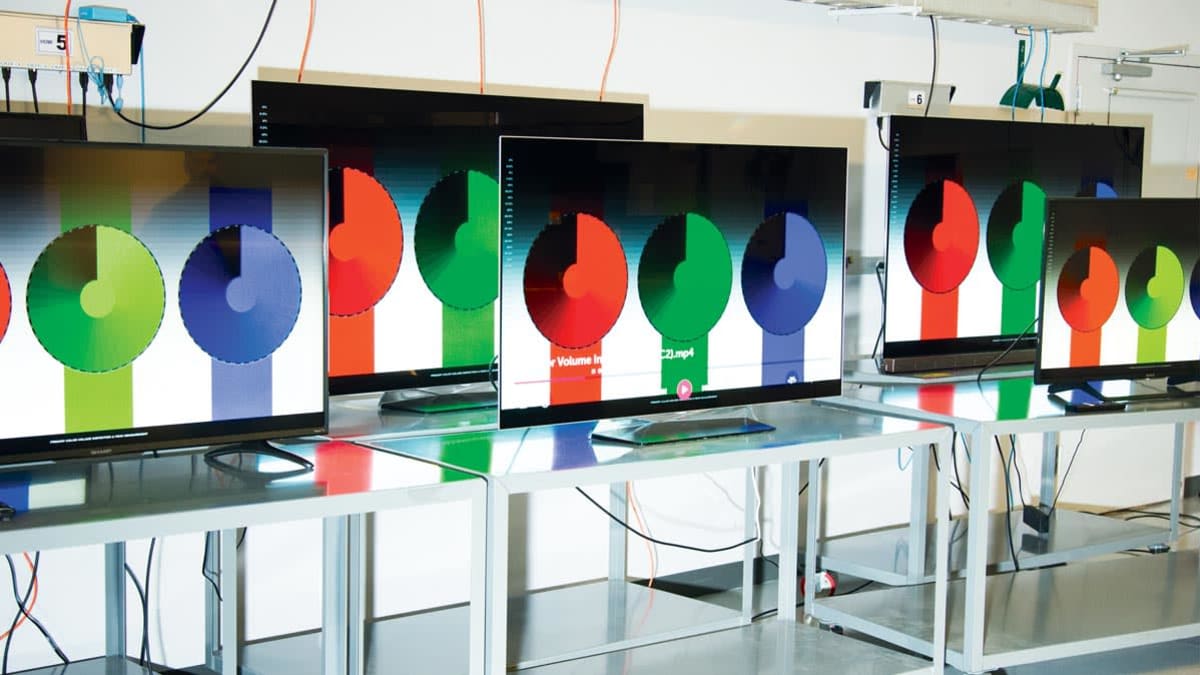
When you shop for a TV, you may see references to different kinds of HDR. There are several variations on the technology. It can be useful to understand these different HDR flavors, but if it’s more information than you want, don’t worry. TVs with any type of HDR can work well, depending on the specific television model.
HDR10 has been adopted as an open, free technology standard, and it’s supported by all 4K TVs with HDR, all 4K UHD Blu-ray players, and all HDR programming.
A number of TVs, including models from Hisense, LG, Sharp, Sony, TCL, and Vizio, also offer Dolby Vision, an enhanced format that works a bit differently from HDR10. It’s also available on some Amazon Fire TV, Apple TV, Google Chromecast, and Roku streaming players, and from streaming services including Amazon Prime Video, Apple TV+, Disney+, Hulu, Netflix, and Paramount+.
Among its advantages, Dolby Vision supports “dynamic” metadata, which allows the TV to adjust brightness on a scene-by-scene or frame-by-frame basis. By contrast, HDR10 uses “static” metadata, setting brightness levels once for the entire movie or show.
There’s also a competing technology, called HDR10+, that uses dynamic metadata much like Dolby Vision. It was developed by Samsung, Panasonic, and 20th Century Fox, and is available in some 4K TVs from Hisense, Samsung, TCL, Toshiba, and Vizio. It’s also supported in some Amazon Fire TV, Google Chromecast With Google TV, and Roku streaming players.
You can find TV shows and movies in HDR10+ on Amazon’s 4K Prime Video streaming video service, Hulu, Paramount+, Google Play Movies, and YouTube. It can also be found in some 4K UHD Blu-ray discs, mainly from 20th Century Fox and Warner Bros. Netflix doesn’t support HDR10+ right now.
There are now some TV, from brands such as Hisense, Philips, and Vizio, that support both Dolby Vision and HDR10+.
Both Dolby Vision and HDR10+ have offshoots of their respective technologies—called Dolby Vision IQ and HDR10+ Adaptive—that can be found on some newer TVs. They use the built-in light sensors found in many TVs to dynamically adjust the brightness, contrast, and color of images based on the ambient brightness in the room.
One advantage of the dynamic metadata in both Dolby Vision and HDR10+ is that it can help a midlevel TV that doesn’t have the brightness levels of a top-tier model adapt the content to the set’s limitations. Using a process called “tone mapping,” the metadata can guide the TV to make scene-by-scene or frame-by-frame adjustments according to brightness, color, and contrast variations in the content.
Many TVs now also support one more HDR format, called HLG, short for hybrid log gamma. It’s currently used by DirecTV, and may be the format adopted by some of the next generation of free over-the-air TV signals, which will follow a standard called ATSC 3.0.
Many newer TVs have built-in support for HLG, and others can receive it via firmware updates if necessary.
Yes, that all sounds complicated.
But there’s some good news. First, your TV will automatically detect the type of HDR being used in a given movie or show and choose the right way to play it. (Often you’ll see a little flag on the TV screen showing the type of HDR that’s playing.) No fiddling required.
Second, as noted above, the type of HDR doesn’t seem to be too important right now. Based on what we’ve seen in our labs, a top-performing TV can do a great job with any of these HDR formats.
Our advice: Instead of fretting over the type of HDR, simply buy the best TV you can, especially because TV manufacturers can update their sets to support additional formats if they become more popular.









